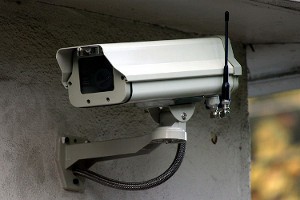As someone who works in information technology, I am often asked how to disable SSLv2 and weak ciphers. These protocols and algorithms are no longer considered secure, and it is important to disable them to protect against potential cyber-attacks.
In this article, I will compare the steps required to disable SSLv2 and weak ciphers in different systems and environments.
How to Disable SSLv2?
SSLv2, or Secure Sockets Layer version 2, is an outdated protocol for establishing secure connections between clients and servers.
It was superseded by SSLv3 in 1996 and has since been deprecated due to known vulnerabilities that make it easy for attackers to intercept and decrypt communications. As such, it is important to disable SSLv2 on any systems that may still be using it.
How do I check if SSLv2 is enabled on Apache or IIS?
If you are running Linux, you can use OpenSSL to verify if SSL v2 is enabled on your web server. Run the following command to test:
openssl s_client -ssl2 -connect SERVERNAME:443For example, if I run this command against google.com, I get the following error message:
$ openssl s_client -ssl2 -connect google.com:443
CONNECTED(00000003)
3308:error:1407F0E5:SSL routines:SSL2_WRITE:ssl handshake failure:s2_pkt.c:428:How do I configure Apache not to accept SSLv2 connections?
Edit your Apache configuration to include the line below. You can add it to the httpd.conf or ssl.conf file.
SSLProtocol -ALL +SSLv3 +TLSv1Restart your Apache process by running the command below. Verify that your Apache web server is no longer accepting SSLv2 connections by running the command from above.
/etc/init.d/apache2 restartHow do I configure Microsoft IIS not to accept SSLv2 connections?
Modify the Windows registry to include the following:
[HKEY_LOCAL_MACHINE\SYSTEM\CurrentControlSet\Control\SecurityProviders\SCHANNEL\Protocols\PCT 1.0\Server]
"Enabled"=dword:00000000
[HKEY_LOCAL_MACHINE\SYSTEM\CurrentControlSet\Control\SecurityProviders\SCHANNEL\Protocols\SSL 2.0\Server]
"Enabled"=dword:00000000Restart your IIS process by running the command below. Verify that your IIS web server is no longer accepting SSLv2 connections by running the command from above.
iisreset /restartHow to Disable Weak Ciphers?
In addition to disabling SSLv2, it is also important to disable weak ciphers or cryptographic algorithms that are no longer considered secure. These ciphers are easily broken by attackers and can be used to intercept and decrypt sensitive information.
How do I know if my web server supports weak SSL ciphers?
If you are running Linux, you can use OpenSSL to verify if weak SSL ciphers are enabled on your web server. Run the following command to test:
openssl s_client -connect SERVERNAME:443 -cipher LOW:EXPFor example, if I run this command against google.com, I get the following error message:
$ openssl s_client -connect google.com:443 -cipher LOW:EXP
CONNECTED(00000003)
3409:error:14077410:SSL routines:SSL23_GET_SERVER_HELLO:sslv3 alert handshake failure:s23_clnt.c:578:How do I disable weak SSL ciphers on Apache?
Edit the httpd.conf or ssl.conf file to include the following line:
SSLCipherSuite ALL:!aNULL:!ADH:!eNULL:!LOW:!EXP:RC4+RSA:+HIGH:+MEDIUMRestart your Apache process by running the command below. Verify that your Apache web server is no longer accepting weak SSL ciphers by running the command from above.
/etc/init.d/apache2 restartHow do I disable weak SSL ciphers on IIS?
Modify the Windows registry to include the following:
[HKEY_LOCAL_MACHINE\SYSTEM\CurrentControlSet\Control\SecurityProviders\SCHANNEL\Ciphers\DES 56/56]
"Enabled"=dword:00000000
[HKEY_LOCAL_MACHINE\SYSTEM\CurrentControlSet\Control\SecurityProviders\SCHANNEL\Ciphers\NULL]
"Enabled"=dword:00000000
[HKEY_LOCAL_MACHINE\SYSTEM\CurrentControlSet\Control\SecurityProviders\SCHANNEL\Ciphers\RC2 40/128]
"Enabled"=dword:00000000
[HKEY_LOCAL_MACHINE\SYSTEM\CurrentControlSet\Control\SecurityProviders\SCHANNEL\Ciphers\RC2 56/128]
"Enabled"=dword:00000000
[HKEY_LOCAL_MACHINE\SYSTEM\CurrentControlSet\Control\SecurityProviders\SCHANNEL\Ciphers\RC4 40/128]
"Enabled"=dword:00000000
[HKEY_LOCAL_MACHINE\SYSTEM\CurrentControlSet\Control\SecurityProviders\SCHANNEL\Ciphers\RC4 56/128]
"Enabled"=dword:00000000
[HKEY_LOCAL_MACHINE\SYSTEM\CurrentControlSet\Control\SecurityProviders\SCHANNEL\Ciphers\RC4 64/128]
"Enabled"=dword:0000000Restart your IIS process by running the command below. Verify that your IIS web server is no longer accepting weak SSL ciphers by running the command from above.
iisreset /restartConclusion
Disabling SSLv2 and weak ciphers is essential in securing your systems and protecting against potential cyber-attacks. Following the steps outlined above, you can ensure that your systems use strong, secure communication protocols and algorithms.
As always, it is important to keep your systems and applications up to date with the latest security patches and updates to protect against new vulnerabilities.
Frequently Asked Questions
Why is it important to disable SSLv2 and weak ciphers?
SSLv2 is an outdated and vulnerable protocol that has been deprecated due to known security vulnerabilities. Weak ciphers are cryptographic algorithms that are no longer considered secure and can be easily broken by attackers.
Disabling these protocols and algorithms helps protect against potential cyber-attacks and ensures that your systems use strong, secure protocols and algorithms for communication.
How do I know if my system is using SSLv2 or weak ciphers?
There are a few ways to check if your system is using SSLv2 or weak ciphers:
- Use a tool like SSL Server Test to scan your server and see what protocols and ciphers it uses.
- Check your system’s configuration or security settings to see if SSLv2 or weak ciphers are enabled.
- Please consult with a systems administrator or refer to your system or application documentation to see what protocols and ciphers it uses.
What are some strong ciphers that I can use instead of weak ciphers?
Some examples of strong ciphers that you can use instead of weak ciphers include:
- AES (Advanced Encryption Standard)
- ECDHE (Elliptic Curve Diffie-Hellman Ephemeral)
- GCM (Galois/Counter Mode)
- SHA256 (Secure Hash Algorithm 256-bit)
- SHA384 (Secure Hash Algorithm 384-bit)
It is generally recommended to use a combination of these ciphers rather than relying exclusively on any cipher.
Can I disable SSLv2 and weak ciphers on all systems and applications?
It is generally recommended to disable SSLv2 and weak ciphers on all systems and applications that support them. However, it is essential to carefully consider the impact of these changes on your systems and ensure that they are compatible with the protocols and ciphers you are enabling.
Sometimes, you may need to consult with a systems administrator or refer to the documentation for your system or application to determine if it is possible to disable SSLv2 and weak ciphers.
Is it enough to just disable SSLv2 and weak ciphers, or do I need to do more to secure my systems?
Disabling SSLv2 and weak ciphers is an important step in securing your systems, but it is not the only step you should take. To guarantee that your systems, applications, and data are always secure, it is critical to regularly update them with the most recent security patches and updates.
Additionally, it would help if you used strong passwords. Employing proactive measures, such as firewalls and installing antivirus software, can help keep your business out of harm’s way.
By taking a comprehensive approach to security, you can better protect your systems against potential cyber-attacks.






